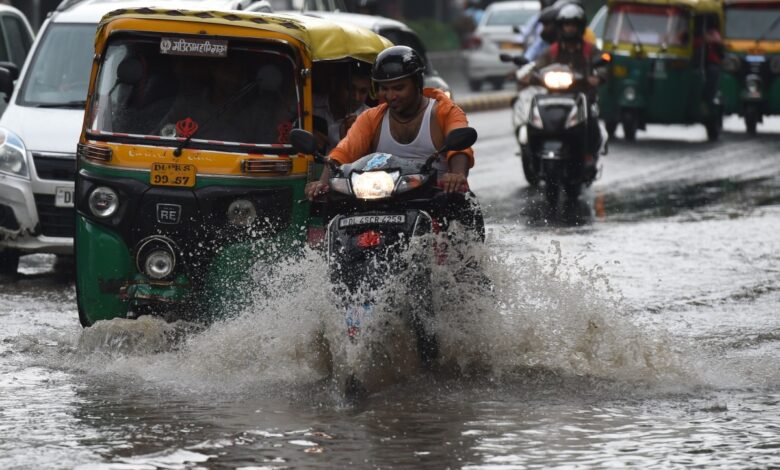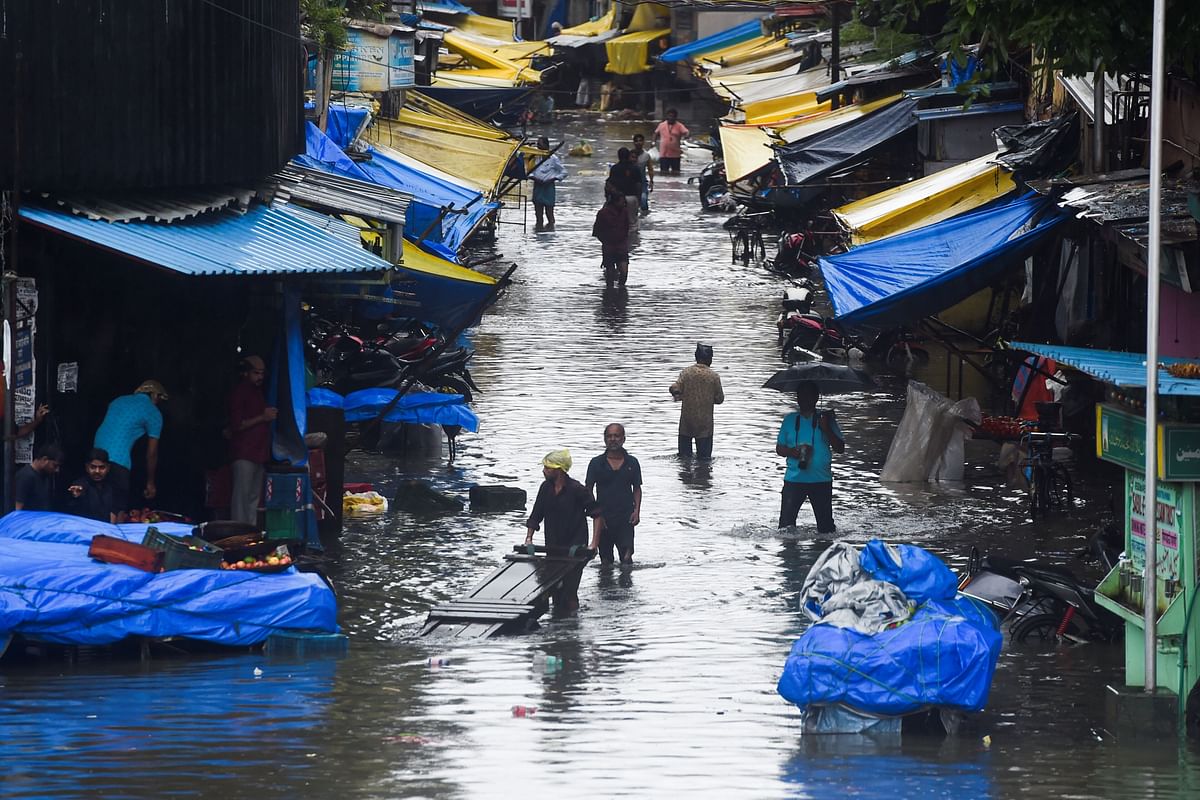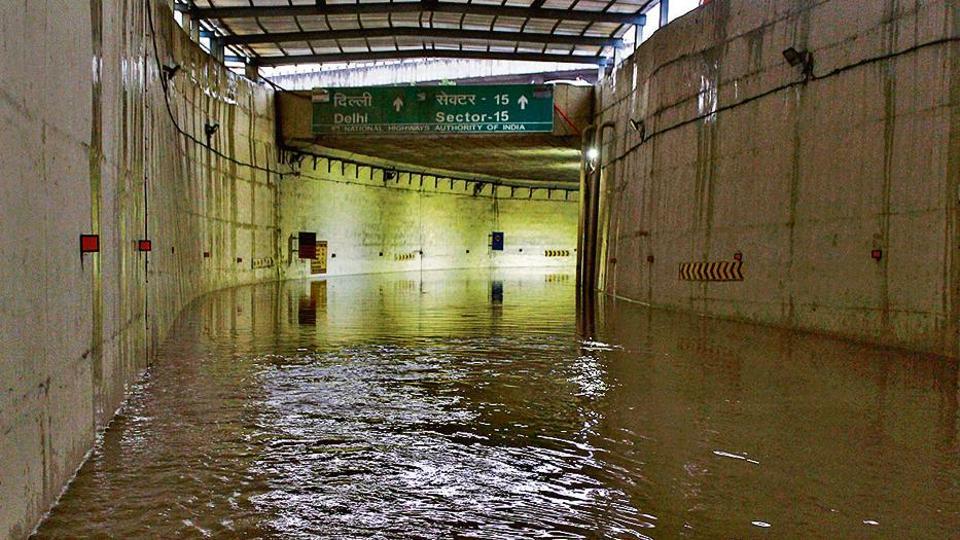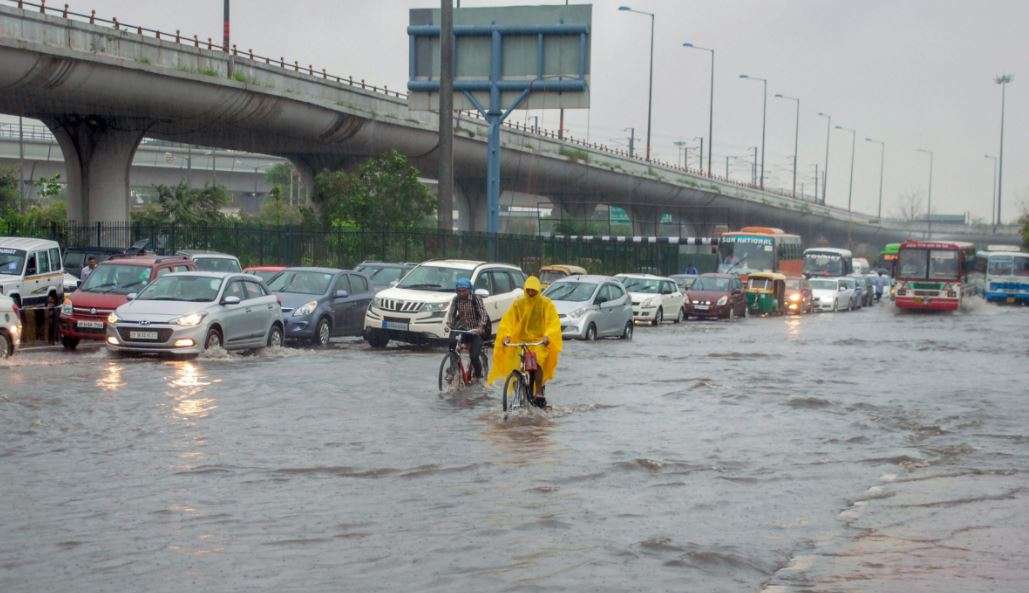How 140 mm of rainfall has brought the Millennium City to its knees due to flooding, commuters suffer; the impact of increasing urbanization

The continuous urbanization and concretization over the years have resulted in the blocking of roads and have impacted the natural course of water resulting in flooding.
More than 140 mm of rain has brought the Millenium City, Gurgaon to its knees by overflowing several roads and the expressway, throwing traffic to be disorder.
Behind the chaotic situation, the experts have commented that a proper drainage infrastructure was unable to withstand the such high intensity of rainfall.
Gurgaon, situated in the foothills of the Aravallis mountain range, used to have hundreds of water bodies, lakes, and bunds in the low-lying regions.
The water bodies acted as natural drainage columns by storing water and preventing floods.
Over the years, urbanization and concretization have taken place either on top or in the path of the natural drains leading to the blockage of the course of water.
According to the reports made by the district administration in 2018, Gurgaon had a total of 640 water bodies in 1956. The numbers rapidly declined to 251 by 2018.
From sectors 68 to 80, the drainage network does not exist, and in sectors 81 to 112 situated near NPR, only 60 to 70 percent of the area is provided with a drainage network.
The drainage lines are often blocked due to construction debris or encroachment.
The drainage network does not have sufficient capacity to carry the heavy stuff runoff during the monsoons.
Increased flooding due to heavy rainfall in the urban areas:
An urban transport systems design expert has stated that if the drainage network is discontinuous, it will lead to the submerging of the roads.
Among the worst affected areas on Thursday was the Narsinghpur-Khansa stretch on the expressway, where the water was accumulated due to its topography.
The region is a low-lying area. Due to the slope of the surface drain at the stretch, rainwater used to flow through the culverts before it got fragmented.
But with the increase in urbanization and habitation over the years, the channels have been proved to become useless in controlling floods.
As a result, heavy rainfall leads to an increase in the intensity of rainfall. The statements have been disclosed by GMDA.
Officials have stated that five pumps have been employed to pump out rainwater. But the continuous rainfall has resulted in the water being reduced in a short time.
At Mayfield Garden near sector 51, the ongoing desilting work of the drain has resulted in the the blockage of drain causing flooding. A wall had been built, and plates had been put up in the drain for the desilting process.
The plates were removed quickly, and a part of the wall was broken to overcome the flooding process. But the water pressure was too high, and due to this, the rainwater accumulated at a stretch as stated by the GMDA official.
The rain continued till Friday morning. As a result, the commuters faced difficulty in traveling through the water-logged underpass at Rajiv Chowk.
Officials have stated that the underpass was not affected on Thursday, and cables of four pumps installed at the Rajiv Chowk underpass were found to be stolen on Friday morning. The incident led to water accumulation in the region.
The people have noticed that the pumps were not operational in the morning at Rajiv Chowk underpass since the cables of the pumps were stolen on Thursday night. The situation was not as severe as the vehicles were able to pass through.
The situation of waterlogging was observed in other main areas such as sector 46/47 traffic signal, Artemis chowk, CRPF chowk, Basal Chowk, South City 1, AIT chowk on the Golf course, sector 21/21 T near Hanuman chowk and many others.
The rain left the pedestrians trapped on the roads for many hours as some vehicles broke down, and a serpentine queue was seen on national highway 48.
The severe situation has resulted in the district administration department issuing an advisory asking the private institutions to guide their employees to work in the comfort of their homes to avoid traffic congestion and allow the repair work to be carried out smoothly so that normal activities can be restored soon.
Flooding is among the leading climatic disasters to people’s livelihoods affecting the development of a country’s progress worldwide.
Climate change and rapid urbanization have led to an increase in flood risks in developed areas. Many regions have lost their relative exclusivity in the prevention of floods.
Urban flooding can become a frequent, widespread, and destructive challenge. India has to plan to tackle such a situation in the future.
The continuous urbanization and concretization over the years have resulted in the blocking of roads and have impacted the natural course of water resulting in flooding.
More than 140 mm of rain has brought the Millenium City, Gurgaon to its knees by overflowing several roads and the expressway, throwing traffic to be disorder.
Behind the chaotic situation, the experts have commented that a proper drainage infrastructure was unable to withstand the such high intensity of rainfall.
Gurgaon, situated in the foothills of the Aravallis mountain range, used to have hundreds of water bodies, lakes, and bunds in the low-lying regions.
The water bodies acted as natural drainage columns by storing water and preventing floods.
Over the years, urbanization and concretization have taken place either on top or in the path of the natural drains leading to the blockage of the course of water.
According to the reports made by the district administration in 2018, Gurgaon had a total of 640 water bodies in 1956. The numbers rapidly declined to 251 by 2018.
From sectors 68 to 80, the drainage network does not exist, and in sectors 81 to 112 situated near NPR, only 60 to 70 percent of the area is provided with a drainage network.
The drainage lines are often blocked due to construction debris or encroachment.
The drainage network does not have sufficient capacity to carry the heavy stuff runoff during the monsoons.
Increased flooding due to heavy rainfall in the urban areas:
An urban transport systems design expert has stated that if the drainage network is discontinuous, it will lead to the submerging of the roads.
Among the worst affected areas on Thursday was the Narsinghpur-Khansa stretch on the expressway, where the water was accumulated due to its topography.
The region is a low-lying area. Due to the slope of the surface drain at the stretch, rainwater used to flow through the culverts before it got fragmented.
But with the increase in urbanization and habitation over the years, the channels have been proved to become useless in controlling floods.
As a result, heavy rainfall leads to an increase in the intensity of rainfall. The statements have been disclosed by GMDA.
Officials have stated that five pumps have been employed to pump out rainwater. But the continuous rainfall has resulted in the water being reduced in a short time.
At Mayfield Garden near sector 51, the ongoing desilting work of the drain has resulted in the the blockage of drain causing flooding. A wall had been built, and plates had been put up in the drain for the desilting process.
The plates were removed quickly, and a part of the wall was broken to overcome the flooding process. But the water pressure was too high, and due to this, the rainwater accumulated at a stretch as stated by the GMDA official.
The rain continued till Friday morning. As a result, the commuters faced difficulty in traveling through the water-logged underpass at Rajiv Chowk.
Officials have stated that the underpass was not affected on Thursday, and cables of four pumps installed at the Rajiv Chowk underpass were found to be stolen on Friday morning. The incident led to water accumulation in the region.
The people have noticed that the pumps were not operational in the morning at Rajiv Chowk underpass since the cables of the pumps were stolen on Thursday night. The situation was not as severe as the vehicles were able to pass through.
The situation of waterlogging was observed in other main areas such as sector 46/47 traffic signal, Artemis chowk, CRPF chowk, Basal Chowk, South City 1, AIT chowk on the Golf course, sector 21/21 T near Hanuman chowk and many others.
The rain left the pedestrians trapped on the roads for many hours as some vehicles broke down, and a serpentine queue was seen on national highway 48.
The severe situation has resulted in the district administration department issuing an advisory asking the private institutions to guide their employees to work in the comfort of their homes to avoid traffic congestion and allow the repair work to be carried out smoothly so that normal activities can be restored soon.
Flooding is among the leading climatic disasters to people’s livelihoods affecting the development of a country’s progress worldwide.
Climate change and rapid urbanization have led to an increase in flood risks in developed areas. Many regions have lost their relative exclusivity in the prevention of floods.
Urban flooding can become a frequent, widespread, and destructive challenge. India has to plan to tackle such a situation in the future.






